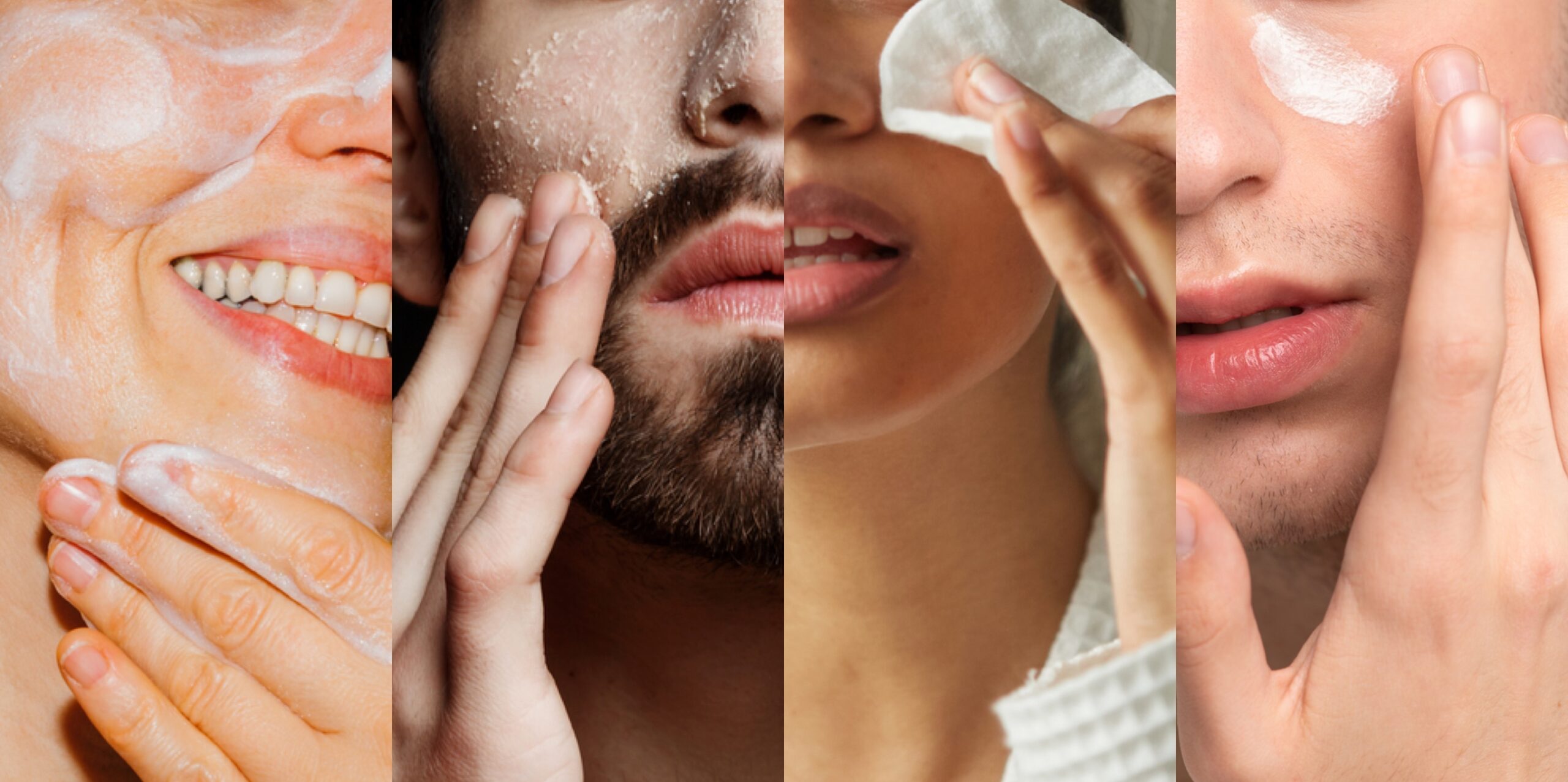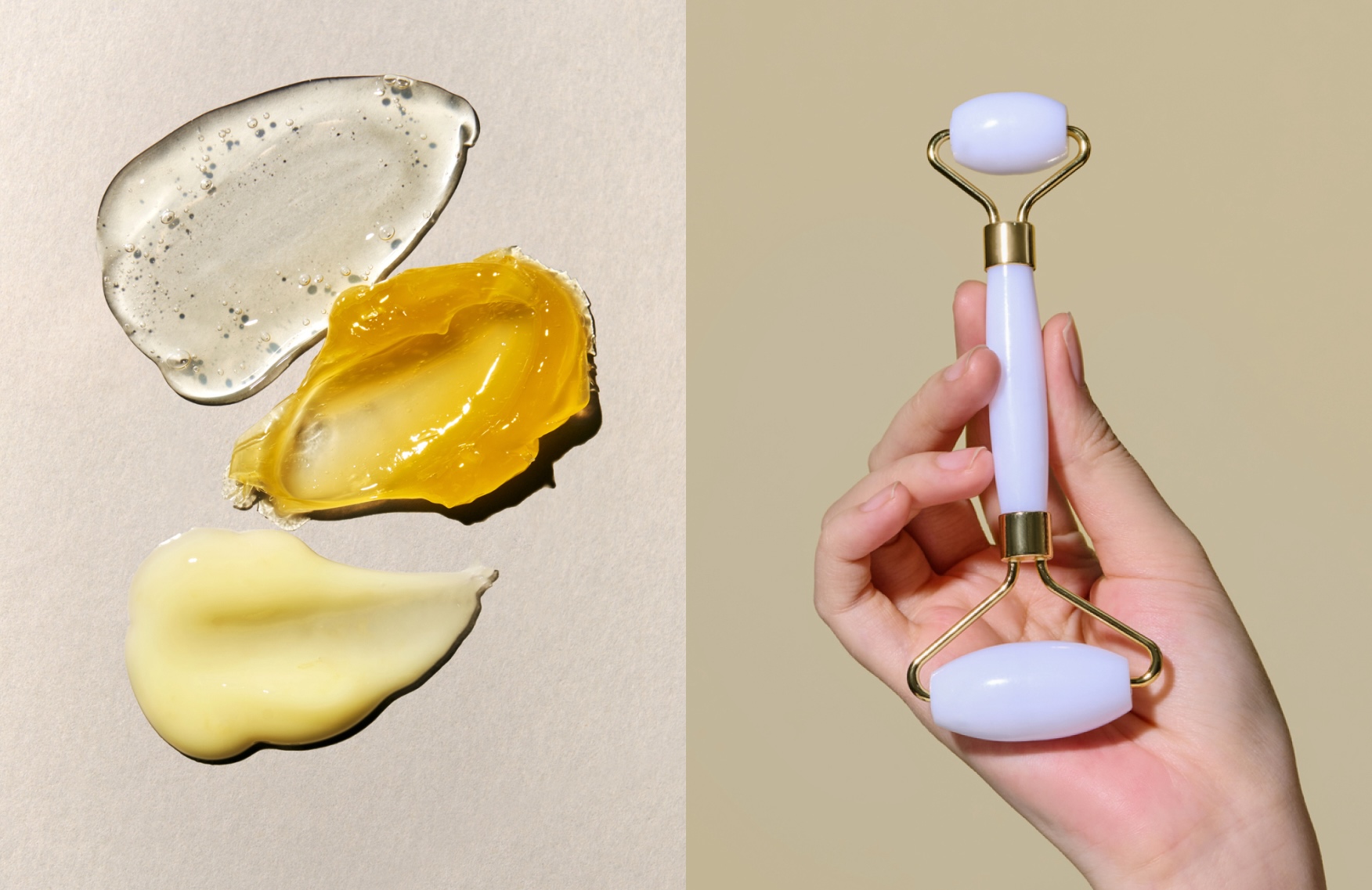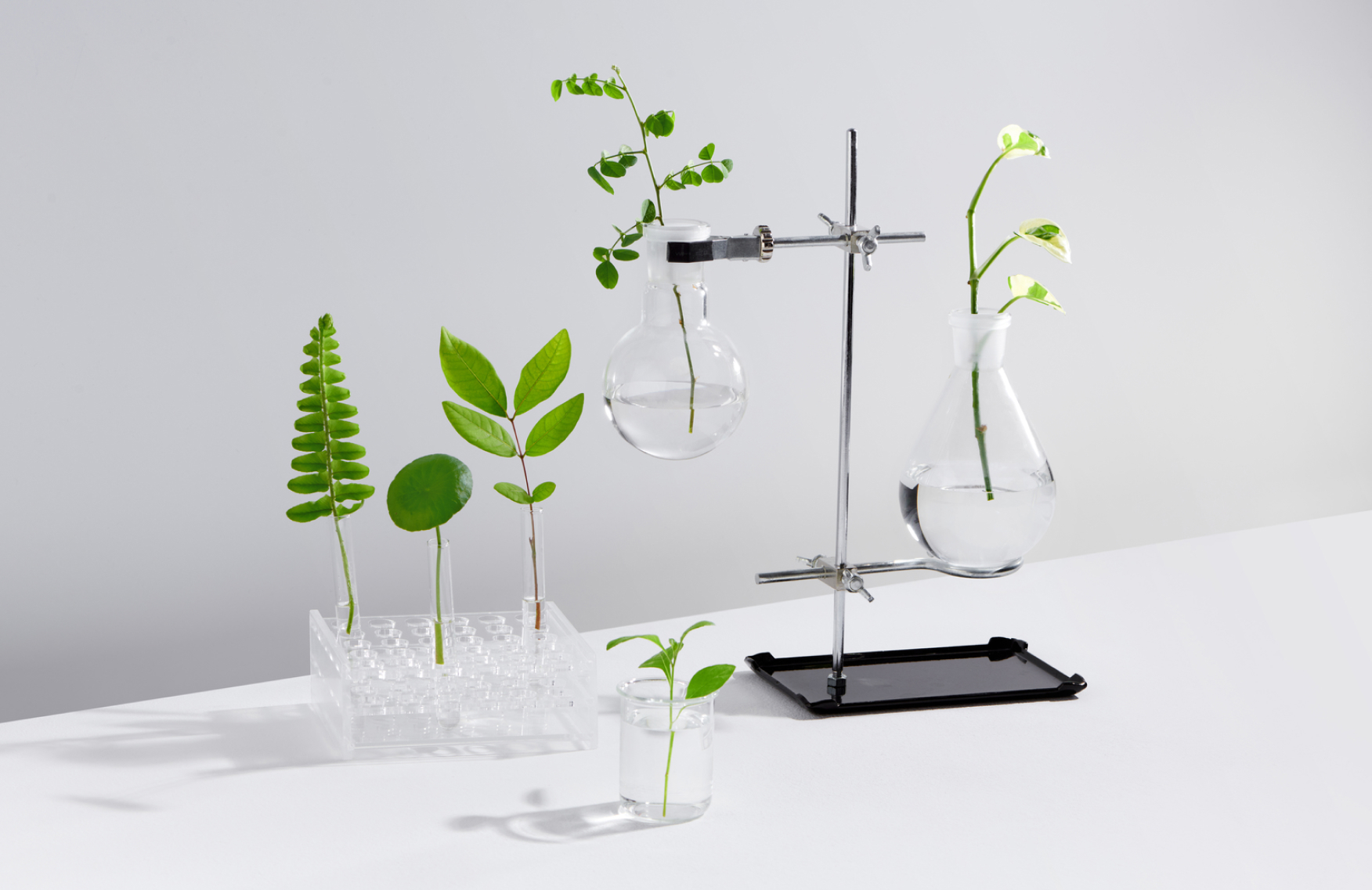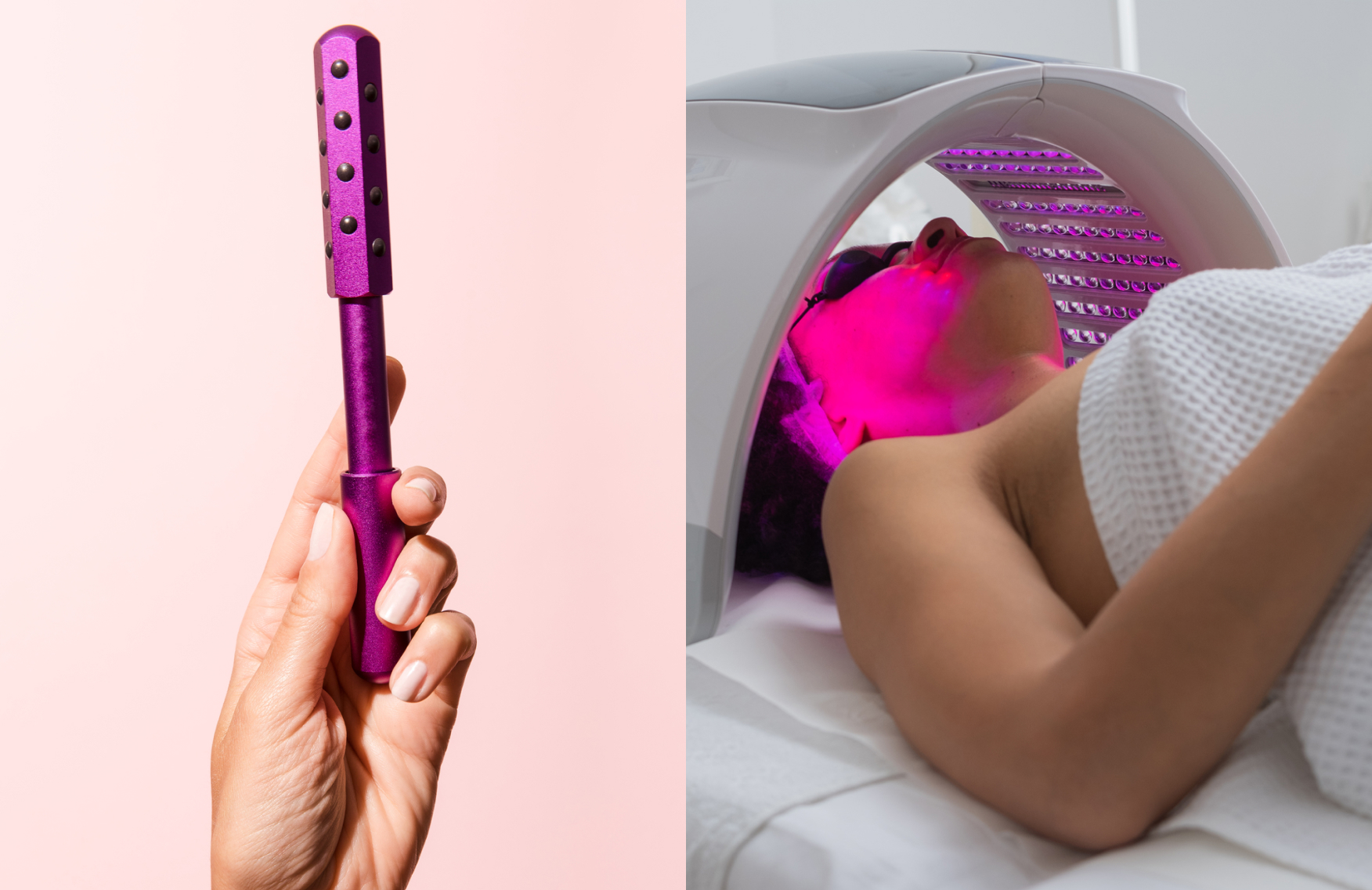The complete retinol review, part 2: A basic manual for putting together your ideal restorative skincare routine

How to create a healthy, restorative skincare routine
There’s nothing “anti” about aging (that’s how we get all the laughs, tears and shared experiences, right?), so it’s all about replenishing and restoring skin to keep that healthy, youthful glow. Here’s a simple guide on how to find your best day/night skincare regimens, including:
1. Cleanser
2. Exfoliator
3. Treatment
4. Moisturizer
The best cleansers will wash away dirt or bacteria, while not stripping your skin barrier, which includes the good bacteria and natural sebum that protect your skin (one of the keys to keeping a youthful glow). Harsh cleansers can strip the barrier, leaving skin prone to damage. Try finding a cream or liquid cleanser that’s:
- Sulfate-free
- Hypoallergenic
- Non-comedogenic
And don’t forget your cleansing method and tools. Protect skin by:
- Avoiding over-washing: This can lead to dry skin, irritation, dryness and even excess sebum—all detriments to skin health. Start by washing day/night and after exercising.
- Using microfiber cloths: It’s tempting to grab the nearest bath towel or face wipe for an easy cleanse. But rough textures can lead to premature aging and deep wrinkles. Instead, gently lather the cleanser onto your face, and wipe it off with a soft microfiber towel.
- Turning down the heat: When in doubt, tepid it out. Hot water can strip the skin of natural oils, while cold water may not cleanse the face effectively. Stick with lukewarm water, which will soothe and cleanse.
To keep skin fresh and radiant, dead skin cells and buildup need to go. That’s where exfoliation comes in. There are two main types of exfoliants: chemical (which encourages the bonds between dead cells to break) and physical (which gently sloughs off the dead skin cells). Some of exfoliating ingredients to build into your routine:
- AHA/BHA: Almost all chemical exfoliants are either alpha-hydroxy acids (AHA) or beta-hydroxy acids (BHA). Find one with both to combine the water-soluble power of AHAs with the sebum-clearing effectiveness of BHAs.
- Glycolic acid: This AHA has a very small molecule size, letting it deeply penetrate the skin to clear out any buildup. Research has also shown that glycolic can boost collagen levels, which can help promote a youthful look.
- Enzymes: Enzyme exfoliants gently reduce dead skin buildup by breaking down keratin (a vital skin protein). Bromelain (pineapple enzyme), papain (papaya enzyme), and actinidin (kiwi enzyme) are popular options.
The most important note with exfoliants? Don’t overdo it. Experts recommend two to three times per week after cleansing to avoid dryness or irritation.
After cleansing and exfoliating, skin is ready to absorb all the goodness of treatments. Find these replenishing ingredients in toners, serums or essences to help restore skin health:
- Antioxidants: Free radicals (aka unstable atoms that wreak havoc on cells) can cause premature aging, so fight them off with antioxidants like vitamin C and ferulic acid. These powerhouses can also help build collagen production and reduce hyperpigmentation.
- Niacinamide: A form of vitamin B3, niacinamide can improve hyperpigmentation, elasticity and promote collagen (a key to youthful skin). Add this all-purpose active via serum or nourishing moisturizer.
- Hyaluronic acid: This naturally occurring ingredient draws hydration to skin and having properly hydrated skin can help reduce the appearance of fine lines/wrinkles, while improving elasticity.
Proper moisturization is the foundation of skin health and self-replenishment. But not all moisturizers are created equally. Try finding a hydrating routine with these elements:
- Non-comedogenic: Avoid the potential of clogged pores with non-comedogenic formulas (aka free of congesting ingredients like beeswax or shea).
- Fatty lipids: Good, natural oils are essential for a healthy complexion to protect and moisturize. Ceramides can be particularly helpful—not only adding hydration, but also helping to build the skin barrier to seal it in.
Now for the key to any restorative regimen: Retinoids!
If a superpower ingredient ever existed, its retinoids. So, what does retinol do? A family of vitamin A derivatives, retinoids accelerate cell turnover, helping everything from wrinkle prevention to hyperpigmentation improvement to blemish reduction. Think of retinoids like skin reboot buttons, with several variations:
- Retinoic acids: Potent retinoic acids are an immediately absorbable form of retinoids, resulting in faster results, but also a higher likelihood of side effects (irritation, peeling, and dryness). These typically should only be used if prescribed by a doctor.
- Retineldahyde (or retinal): Retinaldehyde acts a bit less quickly than prescription-strength retinoic acids. All retinoids need to be converted into retinoic acid at a cellular level to become effective, and retinaldehyde only needs one conversion.
- Retinol: The most popular “middle-ground” of retinoids, retinol balances effectiveness and gentleness, just two conversions away from retinoic acid. A quality retinol can deliver reparative results in just a few weeks, minus the irritation or peeling.
- Retinyl esters: The mildest category, retinyl esters are a great introduction to retinoids. It takes three conversions for this variation to turn into retinoic acid, so results are slower but gentler.
Lastly, a few day and night tips
In the morning, it’s all about protection. Don’t forget these additions to your renewing regimen:
- Sunscreen: UV rays are enemy #1 to skin health. They deform and even kill healthy cells, leading to hyperpigmentation, deep wrinkles and other sun damage. In fact, research shows that sunlight creates nearly 90% of visible skin changes over time. Incorporate at least an SPF 30 into your routine.
- Hats: For those long days when it might be difficult to reapply sunscreen.
- Hydrating makeup: Try seeking hydrating yet breathable skin makeup, like a hyaluronic acid foundation or a light tinted moisturizer.
Then at night, it’s all about repair. Thanks to the release of HGH (human growth hormone) while sleeping, you’ll want to maximize skin benefits during this time by:
- Removing all makeup
- Adding extra facial moisture
- Using silk pillowcases
- Sleeping at least 8 hours per night
The views expressed in this article do not necessarily represent the views of Murad, and are for informational purposes only, even if the advice of physicians and medical practitioners are included. This article is not a substitute for professional medical advice, diagnosis or treatment, and should not be considered specific medical advice.
More about retinol here:
The complete retinol review, part 1: A beginner’s guide to everything you need to know about the powerhouse ingredient
The complete retinol review, part 3: How to use retinol effectively, while side-stepping side effects
The complete retinol review, part 4: Debunking the viral myths around skincare’s continually buzzy ingredient
References for this information:
Healthline Website, Skin
Journal of Cosmetic Dermatology, 2021, volume 20, issue 2, pages 513-521
Journal of Cosmetic Dermatology, 2018, volume 17, issue 6, pages 1136-1143
Journal of Clinical and Aesthetic Dermatology, 2014, volume 7, issue 3, pages 27-29
Skin Cancer Foundation Website, Sun and Skin News


